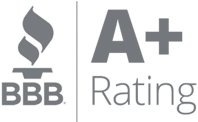
Who Gets a Seat in the Boardroom? Rules on Inviting Non‑Board Guests
If you run a small company, startup or nonprofit organization, you’ve probably wondered: can non-board members attend board meetings?
At first glance, it may seem like the answer is simple: board meetings are for board members, right? But in practice, companies often invite other people into the room, from trusted executives to outside advisors. The key is knowing when that’s appropriate, how to protect sensitive information and what steps to take to maintain confidentiality.
Here are some common rules, best practices and practical tips for managing non-board attendees at your next board meeting.
Can non-board members attend board meetings?
The short answer: yes, at the board’s discretion.
Board meetings are private by default. Directors have a fiduciary duty to the company, and meetings often involve confidential strategy, finances and legal matters. However, it’s common for non-board participants to attend for specific reasons:
● Executives (CEO, CFO, COO): To present financial reports, performance updates or key initiatives
● Advisors or consultants: To share expert insight on strategy, risk or market conditions
● Investors or lenders: Sometimes invited as observers (not voters) when funding agreements grant them access
● Company counsel or accountants: To guide on legal or compliance issues
The important distinction is that these individuals attend as guests or observers. They do not vote or carry fiduciary duties like directors.
Safeguarding confidentiality with NDAs
When allowing non-board members into the boardroom, protecting confidentiality is essential. Best practices include:
● Non-Disclosure Agreements (NDAs): Have guests sign NDAs or observer agreements before joining discussions
● Clear scope of participation: Define whether the guest is attending the full meeting or only specific agenda items
● Document handling: Ensure confidential board materials are collected after the meeting or securely shared
These safeguards protect sensitive company information while still allowing valuable contributions from non-board attendees.
Best practices for minute-taking
Meeting minutes are the official record of board proceedings, so they should reflect who attended and in what capacity. A few tips:
● List attendees: Distinguish between directors and non-board guests
● Note agenda limits: If a guest was present for only part of the meeting, document when they entered and exited
● Avoid unnecessary detail: Minutes should capture decisions, not every comment, to maintain confidentiality
● Keeping minutes clean and accurate helps protect the company if questions arise later
Practical tips for small businesses and nonprofit organizations
For growing companies, balancing transparency with confidentiality may feel tricky. Here are a few guidelines:
● Only invite guests when their input is necessary. Don’t make open attendance a habit
● Have a detailed agenda. That way, you can dismiss guests for sensitive discussions
● Review your bylaws. Some companies include rules about observers, so double-check your governing documents
Ultimately, it’s about finding the right balance between getting the expertise you need and protecting the privacy of your board.
When sensitive discussions are on the agenda, the right setting makes all the difference. For your next board meeting, consider renting a private meeting space, which provides secure access, breakout rooms for guests or advisors who may only attend part of the meeting and live receptionist services to handle check-ins and prevent uninvited interruptions.
By hosting your meetings in a professional space, you protect confidentiality while giving both directors and guests a polished, secure environment.
So, can non-board members attend board meetings? Yes, but only when carefully managed. By using NDAs, documenting attendance properly and limiting participation to what’s necessary, you can get the benefits of outside expertise without risking confidentiality.
Categories
Subscribe to Our Blog
Archive

- November 2025
- October 2025
- September 2025
- August 2025
- July 2025
- June 2025
- May 2025
- April 2025
- March 2025
- February 2025
- January 2025
- December 2024
- November 2024
- October 2024
- September 2024
- August 2024
- July 2024
- June 2024
- May 2024
- April 2024
- March 2024
- February 2024
- January 2024
- December 2023
- November 2023
- October 2023
- September 2023
- August 2023
- July 2023
- June 2023
- May 2023
- April 2023
- March 2023
- February 2023
- January 2023
- December 2022
- November 2022
- October 2022
- September 2022
- August 2022
- July 2022
- June 2022
- May 2022
- April 2022
- March 2022
- February 2022
- January 2022
- December 2021
- November 2021
- October 2021
- September 2021
- August 2021
- July 2021
- June 2021
- May 2021
- April 2021
- March 2021
- February 2021
- January 2021
- December 2020
- November 2020
- October 2020
- September 2020
- August 2020
- July 2020
- June 2020
- May 2020
- April 2020
- March 2020
- February 2020
- January 2020
- December 2019
- November 2019
- October 2019
- September 2019
- August 2019
- July 2019
- June 2019
- May 2019
- April 2019
- March 2019
- February 2019
- January 2019
- December 2018
- November 2018
- October 2018
- September 2018
- August 2018
- July 2018
- June 2018
- May 2018
- April 2018
- March 2018
- February 2018
- January 2018
- December 2017
- September 2017
- June 2017
- April 2017
- October 2016
- July 2016
- May 2016
- April 2016
- February 2016
- November 2015
- September 2015
- February 2015
- January 2015
- December 2014
- November 2014
- October 2014
- August 2014
- July 2014
- July 2013
- May 2013
- February 2013
- December 2012
Talk to an expert
Want help finding the ideal meeting room? Give us a call
Book the Perfect Meeting Room Now
Find a Meeting Room








